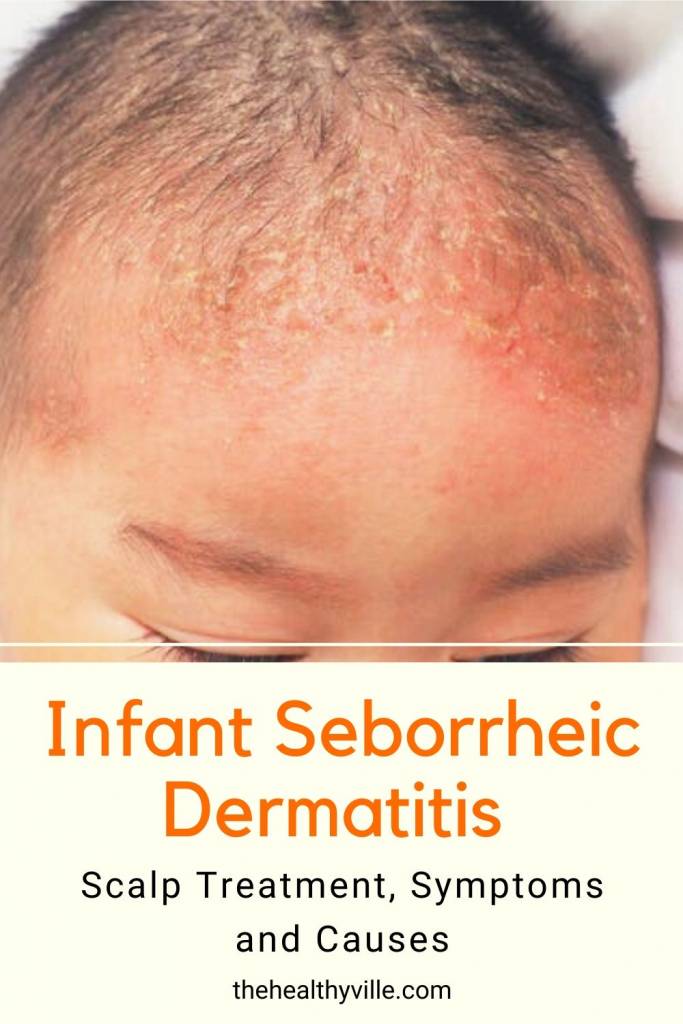Learn the seborrheic dermatitis scalp treatment, symptoms and causes in infants and know all the necessary details when you notice the cradle cap on your child.
Seborrheic dermatitis in the infant is not an infection, it is not contagious and it is not usually serious. It usually starts in the first weeks of life and disappears without scarring.
Seborrheic dermatitis in the infant is also called cradle cap. In general, first-time parents are concerned with looking at reddened areas of skin and scales on their newborn’s scalp.
It is not usually something to be alarmed about, but what should be done and what not? We will talk about it later.
How is seborrheic dermatitis manifested in the infant?
It can occur in small areas, forming clusters stuck together, or cover the entire scalp. Affected areas may have some of the following signs:
- Thick scales or crusts that form on the scalp, but also on ears, eyelashes, eyebrows, nose, groin, neck or armpits as infrequent locations.
- Oily or oily skin areas, often covered in scales.
- White or yellowish, sticky scales that stay attached to the skin.
In infants with sensitive skin, dry skin, or eczema, seborrheic dermatitis can cause cracking and itching of the skin, with the consequent secretion of a translucent liquid. This cradle cap looks different in every infant.
Infants with seborrheic dermatitis rarely have a slight reddening of the skin that may or may not cause itching. Some also have hair loss, which grows back when the condition disappears.
What are these scabs due to?
The causes of this seborrheic dermatitis in the infant are unknown. It is believed that it could be caused by an excess in the production of sebum by the sebaceous glands of the skin, which could be stimulated by the hormonal changes that the mother undergoes during pregnancy.
Another theory suggests the existence of a fungus, called Malassezia, that has the ability to grow along with bacteria in the sebum on the skin. This could be another cause of this pathology.
Prognosis of seborrheic dermatitis in the infant
Seborrheic dermatitis in the infant is not an infection, it is not contagious and it is not usually serious. Nor is it an allergy due to contact with something or poor hygiene. It usually starts in the first weeks of life and disappears slowly over a period of weeks or months, without leaving a mark or scar.
After this period, it may come back suddenly later, but by following the directions below, you can keep the condition under control.
A doctor must make correct differential diagnosis to rule out pathologies with similar clinical symptoms, such as the following:
- Psoriasis.
- Yeast dermatitis.
- Atopic dermatitis.
- Some primary immunodeficiencies.
- Langerhans cell histiocytosis.
When is medical attention necessary?
In general, it is easy to identify seborrheic dermatitis just by looking at it. In any case, it is advisable to consult the pediatrician in the following cases:
- The first time a dermatitis treatment is to be performed.
- If it causes too much itching or hair loss.
- If it is located in areas of the body where there is no hair.
- When the picture worsens or spreads over more areas of the body.
- In the event that a patient with an impaired immune system develops this condition.
- If infection is evident, there is suppuration and the area looks hard, hot, or red.
- When, in addition to having seborrhea, the infant has trouble gaining weight.
Seborrheic dermatitis scalp treatment
Most cases do not require treatment, but it is often in the interest of removing the scales from the scalp and removing them. In these cases, the following steps must be followed:
- Frequently rinse hair with mild baby shampoo; that is, with an acidic pH, hypoallergenic and fragrance-free. Do not use those that are medicated and stronger, considered antiseborrheic, because they can be irritating.
- Gently massage the scalp with a cotton using almond oil or petroleum jelly; avoid using olive oil. This is usually beneficial as it softens the scales and allows them to detach from the scalp. Then rinse well because, if oil remains, it could stimulate the formation of crusts.
- Use 100% cotton clothing washed with white bar soap.
- In the most inflammatory, persistent or extensive cases, it is necessary to go to the doctor. This will indicate using specific shampoo or lotions for a few days to help treat dry skin and scale formation. The strongest forms of these formulations require a prescription.
Seborrheic dermatitis in the infant should not be a concern
Seborrheic dermatitis in the infant is a common manifestation. It is self-resolving, although parents treat it usually for aesthetic reasons.
Before applying any type of product and especially if it spreads to other areas or shows signs of infection, we must make sure to consult our pediatrician.
Don’t forget to SHARE the infant seborrheic dermatitis scalp treatment, causes and symptoms with your friends and family members on your social networks!

